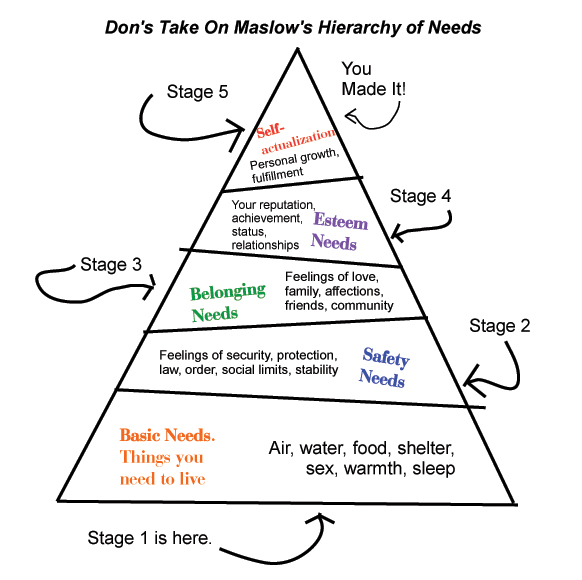
As a member of the human race blessed to live in these here United States, you are bombarded with thousands of marketing pitches every day. On TV, radio, billboards and whenever you log on to your favorite website, social media forum or check your e-mail, marketers of all stripes are vying for your attention. (Actually, I’d be surprised if we are not all becoming numb to this constant “LOOK AT ME!!” barrage of electronic ads – now, I am no researcher, so I do not know if this is true or not. (If you know of any studies on this subject, please pass them on to me. Thanks in advance.)
One of the bonuses for us in the print medium (both newspapers and magazines) is our readers do not see our customers’ ads as an annoying hindrance – which is good. This cannot be said for advertising most anywhere else and in particular on-line.
In May of this year, Forbes reported in an article headlined The End of Advertising As We Know It, by James McQuivey, “. . .major advertisers like GE and JP Morgan Chase have been re-examining their digital display advertising spend and threatening to cut significant dollars . . . Forrester released new research on the backlash of these ad networks — including Google and Facebook — and found that consumers are increasingly finding ways to avoid digital ads, while advertisers are investing less in online advertising . . . Put simply, the end of advertising is coming because interruptions are ending.”
“. . .major advertisers like GE and JP Morgan Chase have been re-examining their digital display advertising spend and threatening to cut significant dollars . . . Forrester released new research on the backlash of these ad networks — including Google and Facebook — and found that consumers are increasingly finding ways to avoid digital ads, while advertisers are investing less in online advertising . . . Put simply, the end of advertising is coming because interruptions are ending.”
Conversely, a blog by Jenna Bruce on MediaSpaceSolutions.com states, “Advertising in a newspaper is not seen as an interruption. In fact, numerous surveys have shown one of the reasons people buy newspapers is to view the ads for their local stores and businesses. Consumers do want and need to be exposed to advertising; they simply want ads on their own terms . . . When a person reads an advertisement (in a newspaper) it’s because they choose to do so. They give their full attention to your message and will remember you when they need your product or service.”
Yay for us!
That said, we (and by that I mean the advertising and ad design staffs at your ever-lovin’ community newspaper) still need to be cognizant of our customer’s ad on these pages. We need our customers’ ads to be effective if we want our customers’ continued trust and support. For years I have heard (from many sources so I believe it to be true) the average person will spend about three seconds scanning a newspaper page looking for something to grab their attention. In a split second, a reader may look to an ad, story or simply turn the page.
Ad Design Is Critical.
All elements of a good print ad – the headline, graphic, copy, offer, contact info – need to work in concert to stop the reader, engage the reader and move the reader act.
So, what goes into designing a good ad? Well, a number of things. First, you need to know who you’re targeting and what your expectations are for the ad. For example, if your target market is hungry men wanting a good burger for lunch, you would not design your ad to entice women. If you expect the phone to ring off the hook, or folks to bust down your doors after your ad has run, you need to have an exceptional offer in an ad that is bold and stands out. This is a Return on Investment –ROI – ad, versus a two column by two-inch branding ad which does little more than remind readers a certain business is open.
And, you need to understand one of the basic rules of marketing. Marketing is not about reasoning with potential customers. It is not rational. Marketing is emotional.
In general, people buy to fulfill two things: a solution to a problem; or to feel good.

In his 1943 paper, A Theory of Human Motivation, Abraham Maslow proposed a hierarchy of needs most people require to feel good, healthy, safe and loved. To illustrate his theory, he created a five-stage pyramid. At the base of the pyramid are a person’s basic life needs — things like air, food, water, shelter, sex, warmth and sleep. From this foundation, everything else is built upon.
Next stage up is safety (feelings of security, protection, law, order, social limits and stability).
Further up is the stage of belonging, or love (this is where the feelings of family, affections, friends and community come into play).
The last two stages are esteem and self-actualization needs. Your esteem needs are met by your reputation, achievement and status within your relationships and community. Self-actualization deals with personal growth and self-fulfillment.
In marketing, you put any one of these needs in question and then offer a solution — whatever goods or services your business offers. A simple example of this would be, “Hungry For a REAL Good Hamburger?” “Don’s Hamburgers Have Been Voted Best in Town for 5 Years Running! Whether you’ve tried a Don Burger or want to taste what all the love is about, stop in and mention this ad for $2 off your next $5 burger!”

Now that I have shared some secrets, I hope all our local businesses will do better with their ads! If you have any questions, give me a shout via e-mail. Send your questions to: DontRushDon@gmail.com

Leave a Reply